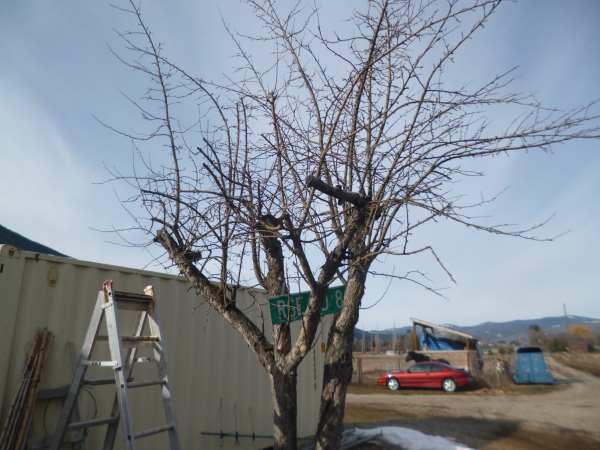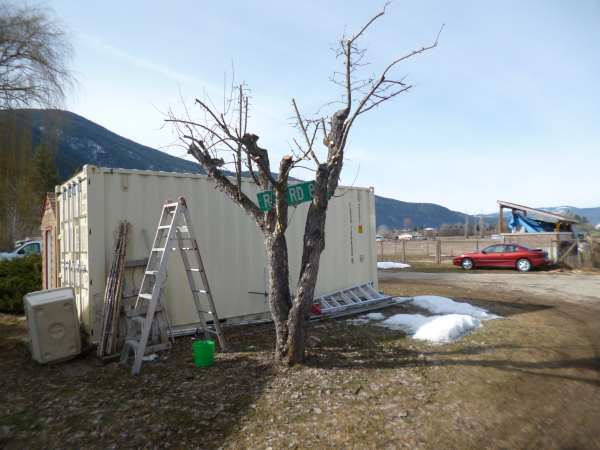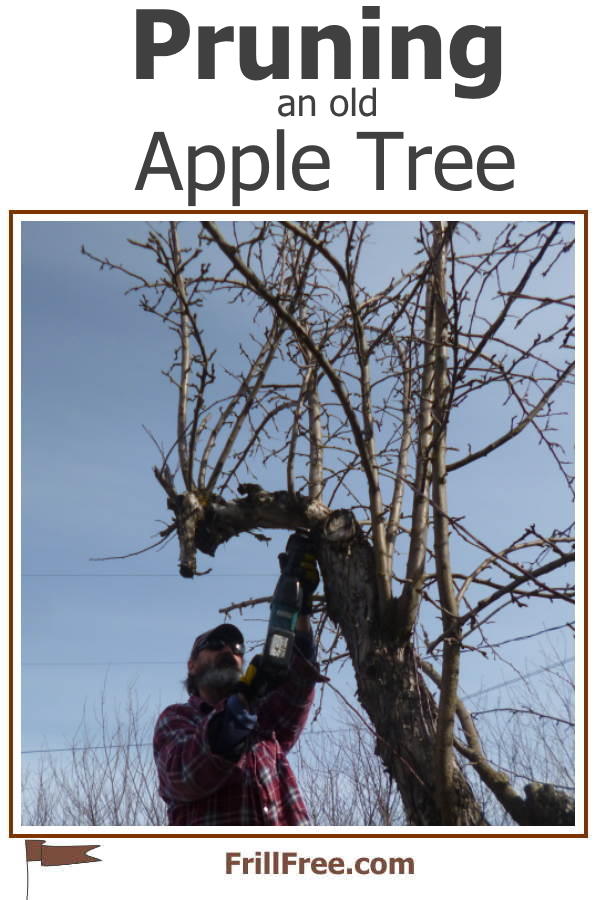- Homesteading
- How to Grow Organic Fruit
- Pruning an Old Apple Tree
Pruning an old Apple Tree
Giving It A New Lease On Life
Apples generally are pruned in the spring, before the leaves bud out - this is mostly so you can see what you're doing, and not damage the growing tender buds of leaves and flowers.
This old tree had been pruned years ago, but not by an expert, by any means! The result of the butchery was the growth of large numbers of 'water sprouts' or suckers. These grow straight upwards, and if left, they'll either break off, or take all the energy from the tree.
 The old neglected apple tree, prior to the tools coming out...
The old neglected apple tree, prior to the tools coming out...Flowers (and hence the fruit) will only form on horizontal branches, which makes sense. The whole trick of pruning an apple tree is to try and get as many horizontal branches as possible, while giving each branch enough room to grow and produce and ripen fruit.
If necessary, you can put weights on the upright branches to make them more horizontal - horseshoes work well for this.
Renovating, or rejuvenation pruning is sometimes quite drastic, but it's essential to remove the damaged, crossing and diseased wood.
If a tree is carefully pruned early in its life, this type of butchery will never be needed.
A neglected and overgrown tree may not flower or fruit after severe pruning, but it will make up for it in subsequent years - this is a lot better than simply cutting the tree down.
Some of these old apple trees are heritage varieties, and not found in garden centers, so they're worth holding onto.
 The final result after a few hours of pruning
The final result after a few hours of pruningGenie told me that the person who used to live on their property showed up one day, as a very elderly lady.
She said that her mother had planted that tree from a tiny sapling found down by the river, obviously from a seed dropped by a bird, bear or borne down the river and deposited on the bank to grow.
Tips for pruning old trees;
- Don't cut off too much at one time, especially on an old tree. This
will trigger some excessive growth of exactly the wrong kind - water
sprouts.
- Do the major pruning spread over two or three seasons.
- Give the growth somewhere to go, with a well placed horizontal or outward facing bud.
- Take out any damaged, dead, diseased or crossing branches, and leave enough room for a robin to fly between the branches.
- Undercut large branches so that it doesn't strip the bark off.
- With extremely large and heavy branches, cut them off in sections.
The fruit is green, and tart - perfect for cooking and baking into pies.
One thing that happens with older trees is sometimes an alternate year bearing cycle, when it only flowers and bears fruit every second year.
This can be triggered by bad pruning, but sometimes the tree comes into it naturally.
Mike was my helper on this job - I told him what to cut, and he cut it off with various tools.
One tool that came in handy was a reciprocating saw with a fine toothed blade, a folding pruning saw, and the trusty Felco loppers.
See more on Best Garden Tools here.
We decided to quit once the main framework was in place, to avoid the possibility of excess growth. Once it's started into growth, we'll go back and redirect it if needed to outward facing buds.
Meanwhile, a layer of compost with a sprinkling of Dolomite lime will help it regain its vigor.
Can't wait to see it start to produce again!












